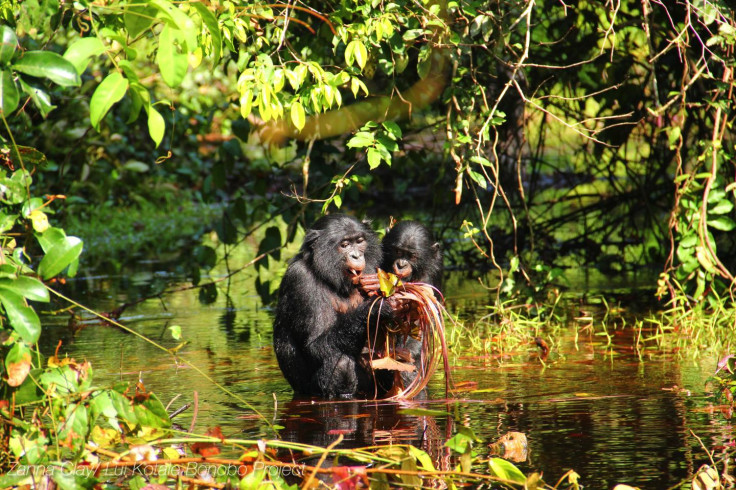Bonobos communicate like babies through contextualised 'peeps' suggesting evolutionary transition
Bonobos communicate in a way similar to human babies, through a series of contextualised 'peeps', scientists have discovered.
The team from the UK's University of Birmingham and the University of Neuchatel in Switzerland were looking at the acoustic structures of bonobos and babies and found similarity in calls made across different emotional contexts.
Bonobos make short, very high-pitched calls pronounced with a closed mouth. These are produced in a wide range of situations across positive, negative and neutral circumstances – such as feeding, resting and travelling.
Published in the journal PeerJ, the scientists said it was previously thought primate vocalisations are tied to contexts and emotional states, whereas human speech is not governed by this.
However, before babies develop language they produce calls known as protophones based on their emotional state. These calls differ from laughter or crying.

The similarities in the acoustic structure of the peeps and baby vocalisations suggest bonobos have contextual flexibility, with recipients having to take a meaning from the sound depending on the context.
Study leader Zanna Clay said: "When I studied the bonobos in their native setting in Congo, I was struck by how frequent their peeps were, and how many different contexts they produce them in. It became apparent that because we couldn't always differentiate between peeps, we needed to understand the context to get to the root of their communication.
"We felt that it was premature to conclude that this ability is uniquely human, especially as no one had really looked for it in the great apes. It appears that the more we look, the more similarity we find between animals and humans."
Scientists believe the communication of the bonobos could be an evolutionary transition from "functionally fixed animal vocalisations", which are tied to contexts and emotional states, to more human methods of communication, which appeared around six million years ago. Human language could have deep roots in primate lineage, they say.
"Our data suggest that the capacity for functional flexibility has evolutionary roots that predate the evolution of human speech," they conclude. "We interpret this evidence as an example of an evolutionary early transition away from fixed vocal signalling towards functional flexibility."
© Copyright IBTimes 2025. All rights reserved.






















